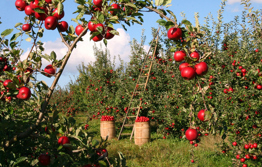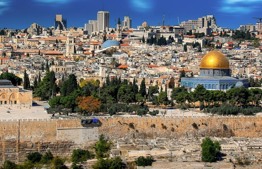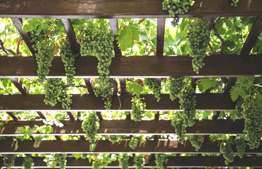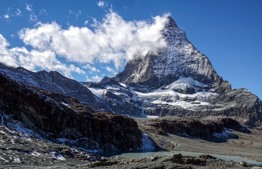Parashat Va’etchanan: Glatt Kosher Bacon
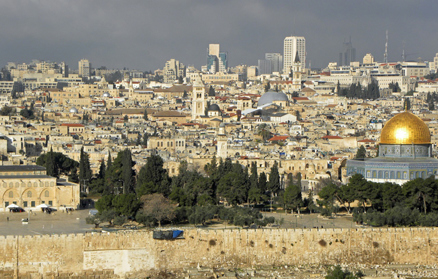
Believing in a partial truth can become a substitute for a bond with the Great Truth—Hashem. To fortify the Jewish people’s bond with Hashem while settling the Land of Israel and observing the mitzvot, Hashem permitted consuming forbidden foods during the first seven years of conquest of the Land of Israel.
It shall be that when Hashem, your G-d, brings you to the Land …to give to you great and good cities that you did not build, houses filled with every good thing that you did not fill, chiseled cisterns that you did not chisel, orchards and olive trees that you did not plant, and you shall eat and be satisfied. Beware for yourselves lest you forget Hashem … . (Devarim 6:10-12). “Filled with every good thing”—says R. Yermiya bar Abba in the name of Rav: [this refers to] bacon (this teaches us that even forbidden food was permitted to them). —Chullin 17,71
Partial truth as a substitute for the genuine truth
One of the painful adverse effects when people discover some bit of truth is that often this piece of truth becomes, in their eyes, the truth in its entirety. An example is when a person becomes close to a great Torah scholar who helps him progress tremendously in his spiritual growth. He will then do all he can to disseminate his rabbi’s name and convince as many people as possible to draw close to the tzaddik; he figures that if it was good for him, it will be good for everyone else as well. The truth is that often a certain path in the service of Hashem might be beneficial to one person while it is not at all good for someone else. Unfortunately, these zealous disciples (out of genuinely good intentions) just do not understand this; instead, they try to pressure their friends into adopting their rabbis.
This is not only a personal issue. It can also be true of any good thing—whether people see it as a way to serve Hashem or as something outside of that category, such as healthy behavior. Often people can take upon a health-related activity and go all out, bending over backwards for it, believing that it is the “great truth.” We have to know, however, that even if it is a good thing, everything in this world has an appropriate place and time to be implemented.
Focusing on a specific aspect of truth becomes a problem when people turn it into a substitute for the Great Truth—Hashem. This behavior is even in some ways idol worship, in that man essentially takes off the crown from the King and crowns, instead, one of His servants. This is the problem but it is also the solution. When a person understands that the absolute truth is only the Source of Truth and not one of His servants, as great as the servant may be, he will not become entirely subservient to any one tzaddik, path of serving Hashem, or certain bit of truth he discovered, as great or small as it may be.
The Land of Israel and the mitzvot: a means for the dwelling of the Divine Presence but not an end in and of itself
This is true as well for even the most important of things. An excellent example of this is the Land of Israel: “The Land the Eyes of your L-rd focus on”; the Land has a whole series of mitzvot that only apply there; the land of prophecy, to where the loftiest tzaddikim, especially Moshe Rabbeinu, yearned to enter. Some people, though, turn the Land of Israel—as exalted as it is—into an end in and of itself. When some believe that the Land of Israel is valuable on its own, as a separate entity disconnected from the Master of the Universe, this poses a grave danger, both physical and spiritual. The Land of Israel itself then becomes endangered; we are currently commemorating a decade to one tragic example of this.
Moreover, it happens that mitzvot can turn into the main goal, while the One Who commanded them is forgotten. This, G-d forbid, does not mean that there is a time when one does not need to observe the mitzvot; rather, that a person must not make chumrot and hiddurim his raison d’etre while totally losing sight of the fact that there is Someone who commanded the mitzvot to begin with. In other words, someone can be “super machmir” while being very distant from Hashem.
To avoid this, Hashem gave us interesting guidlines. So that we do not come to believe that the Land of Israel and the mitzvot are goals unto themselves, disconnected from Hashem, during the first seven years of the conquest of the Land of Israel Hashem permitted the warriors to eat whatever they found. According to one opinion in the Gemara, this was not only during wartime or when lives were in danger (see Torah Temimah, Devarim 6:11). The same was true for the laws of orlah. The Mishna in the first chapter of tractate Orlah states: “When our forefathers came to the Land of Israel, and they found [a tree] already planted, it was exempt from the laws of orlah” (Orlah 1:2). Despite the fact that trees planted by non-Jews are subject to the laws of orlah (that is, its fruit can only be consumed in the fourth year after being planted), whatever trees they found that had already been planted were exempt from these laws. We must remember that the Land of Israel on its own does not generate sanctity, but rather He Who created it infused it with its sanctity—as proven by the fact that during the conquest of the country the warriors were allowed to eat orlah. Even pork, the quintessential non-kosher food is forbidden for consumption only when Hashem decides it to be so. If He says it is permissible, then it is not a problem. Making bacon and orlah permissible was meant to serve as a reminder that the purpose of the mitzvot is to draw us closer to Hashem, and that they are not goals in and of themselves.
Stringencies in Simonia
“Produce in [grown] in a beit rova—as long as it is not surrounded in all four directions.’ R. Zeira asked R. Yessa: ‘According to what we said, only one type [of grain] is planted in the fields of Simonia.
The Mishna in tractate Kila'im describes the distance between fields necessary for planting seeds of different varieties so as not to transgress the prohibition against kila'im, cross-breeding seeds. Between different types of grains there must be a distance of a beit rova (a measurement of space where it is possible to grow a fourth of a kav of wheat, approx. 24m or 34.56m according to different opinions). This is as opposed to the distance needed between different types of vegetable patches, which is only six tefachim (approx. 45.6-57.6 cm according to various opinions). The reason for this is that six tefachim is the minimal distance so that the area of fertilization of one seed (three tefachim) will not mix into another seed’s area of fertilization; this is minimum distance needed to avoid transgressing the Torah prohibition. In contrast, with produce that is generally grown in large areas (not like vegetables), more than a beit rova is needed between the fields, so that the areas where the seeds are planted will not seem to be mixed to onlookers. This stringency for distancing grains is rabbinical, above and beyond the Torah prohibition of six tefachim.
The Jerusalem Talmud adds another stringency, namely that the distance of a beit rova is only sufficient when the field is not surrounded by all directions by the other type of grains. In such a case, the fields still seem mixed to onlookers, despite the separation, and the beit rova separation does not suffice.
R. Zeira then asks R. Yessa: According to this, in Simonia, where people only planted in the whole area, someone who has a field there could not plant a different grain than that of his neighbors, since all the fields surrounding his would be of different grains and the distance of a beit rova between the fields would not be sufficient. Rabbi Yechiel Michel Epstein, author of the Aruch HaShulchan (Yoreh De’a 297:32) explains that according to the Rambam, R. Zeira’s statement should be read as a rhetorical question, that is, this could not possibly be the halacha—that when a field is surrounded by four sides, the distance of a beit rova is insufficient—since then in Simonia it would be impossible to plant more than one type of grain, and we know that this is not the case. For this reason, the Aruch HaShulchan explains, the Rambam does not cite this stringency of a field being surrounded by all sides as a halacha.
We know of Simonia as a Second Temple era city, mention in the Mishna and the Gemara, but it is much more ancient than that period. In the Navi it appears as Shimron (the Talmudic sages identify Simonia as the Shimron, Y. Megillah 1:1). Here the original name was not forgotten, since in external sources, the place is called Samoun or Samuna, so the biblical name might be a variation but the source is clear.
Shimron was one of the important cities on the edges of the Jezreel Valley and spans until the western border of the Lower Galilee. Its king was one of the 31 kings whom Yehoshua defeated in the conquest of the Land of Israel and it lies in Zevulun’s portion.
In the Second Temple period is was already known as Simonia, which is how it is referred to by Josephus Flavius as the place the Jewish warriors barricaded themselves before their battle against the Romans during the Great Revolt.
Simonia is also mentioned in the Gemara (Y. Yevamot 12:6) in another context (besides the laws of kila'im): Its inhabitants asked R. Yehudah HaNasi (a.k.a. Rebbe) to appoint them a rabbi (Simonia lies between the two cities Rebbe lived, Tzippori and Beit She’arim). Rebbe sent them one of his prized pupils, R. Levy bar Sisi. When the latter arrived, the locals had him stand on a large podium and began asking him halachic questions, and he couldn’t answer them; he couldn’t answer their questions in aggada either. The deeply disappointed Simonians came to Rebbe complaining about the “great rabbi” he sent them. Rebbe told them: “Know that I sent you someone like myself.” Rebbe called R. Levy bar Sisi and asked him all the questions that the Simonians had asked him beforehand, and the latter responded with precise answers. Rebbe asked his disciple why he did not tell the locals the answers if he knew them so well. R. Levy bar Sisi replied frankly, “They stood me on a huge podium, I became haughty, and I forgot my studies.
Adjacent to Tel Shimron/Simonia is the first Laborers’ moshav Nehalel; at the foot of the Tel is moshav’s cemetery, with several famous figures buried there. Recently a resident of the area discovered an inscription on a rock with the word Shabbat, which researchers believe was supposed to demarcate the techum Shabbat of the community from the neighboring community, Mahalol. At the foot of the Tel is a nature reserve of anna trees (acacia albida), the northernmost location in the world where this variety grows. Prof. Y. Felix believes it is the same variety of trees used for the planks of the Mishkan.

